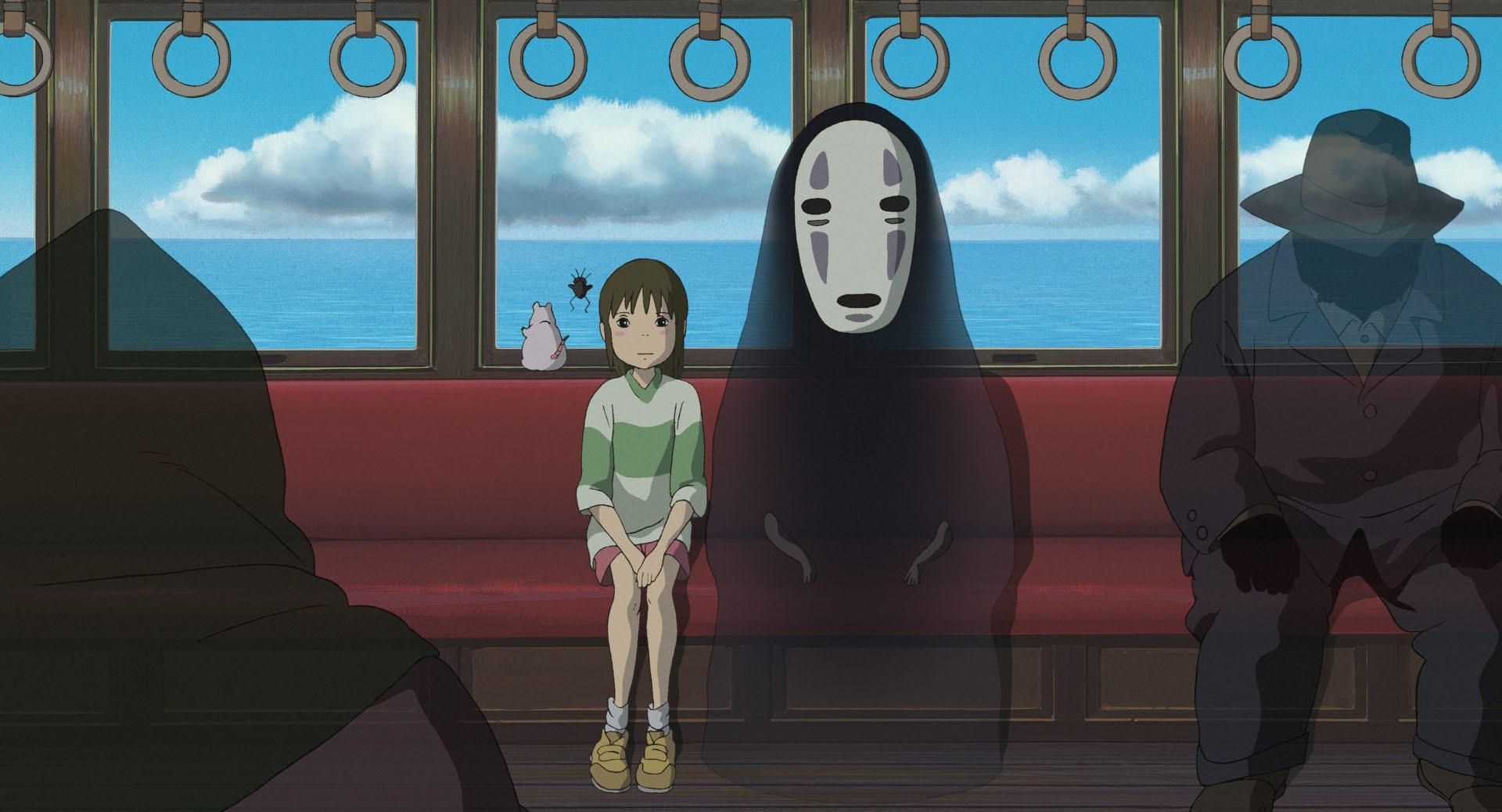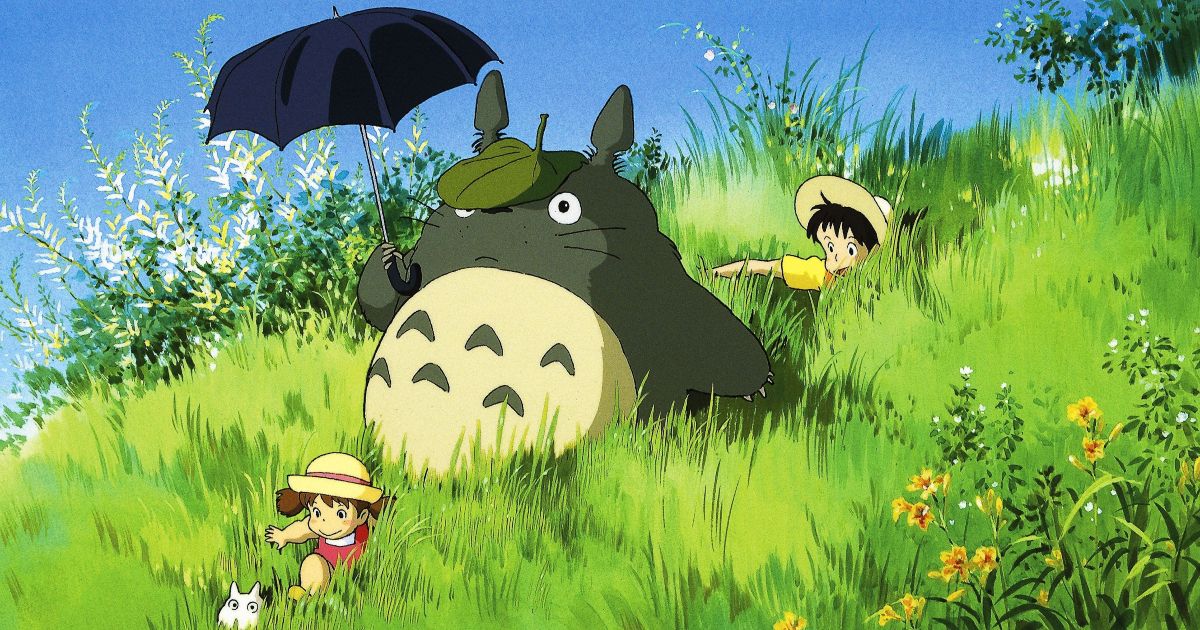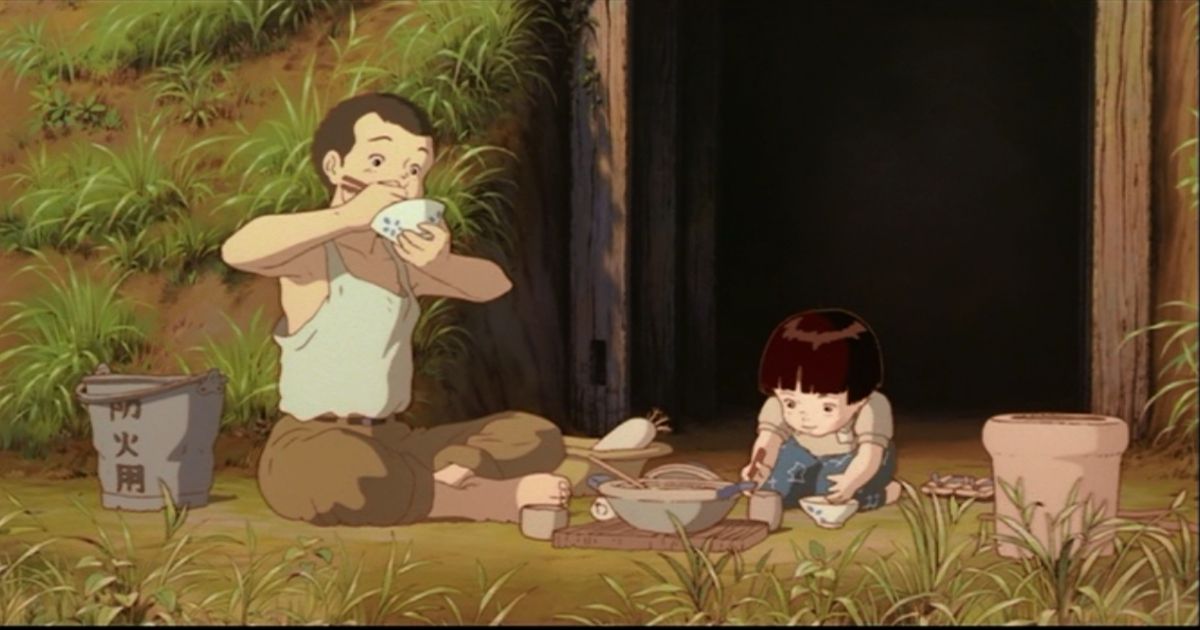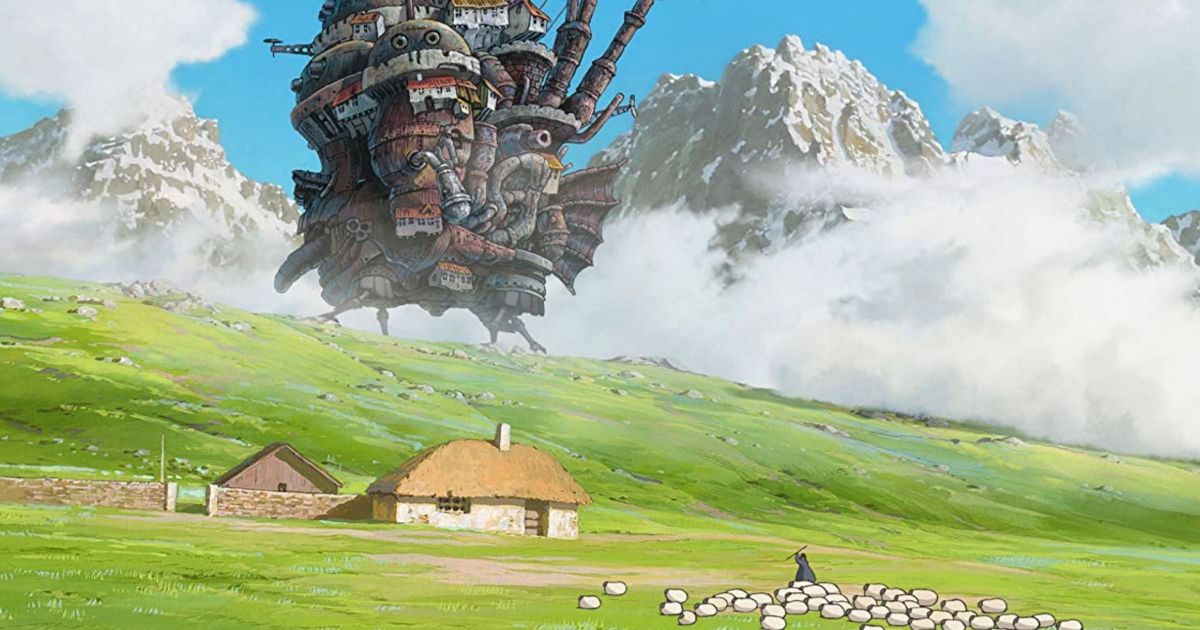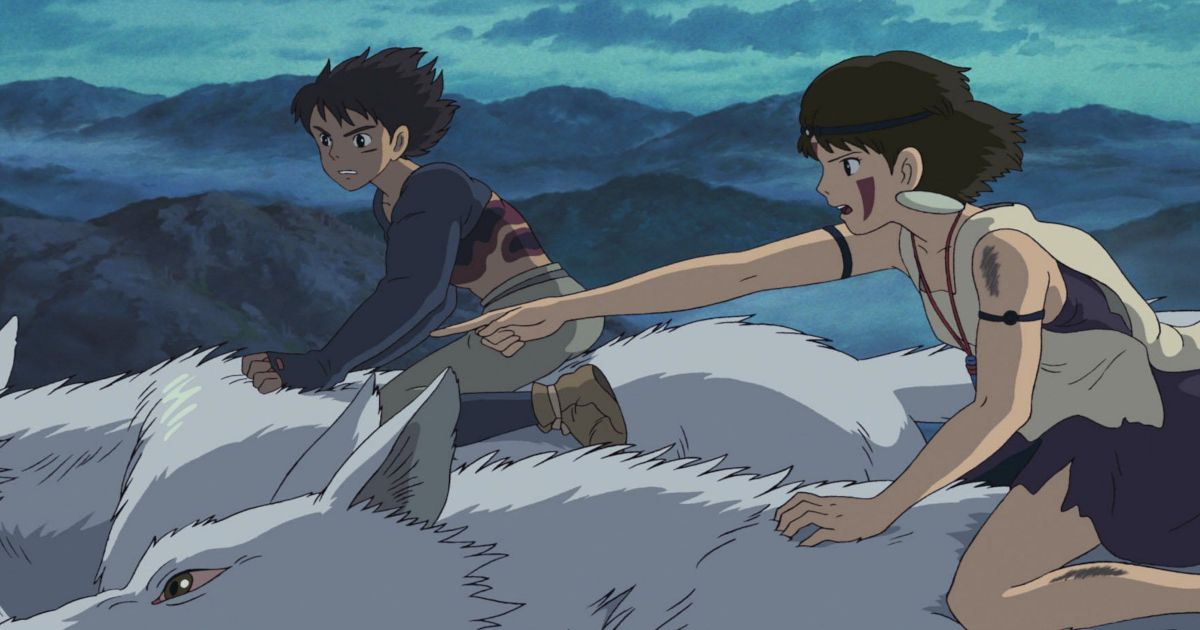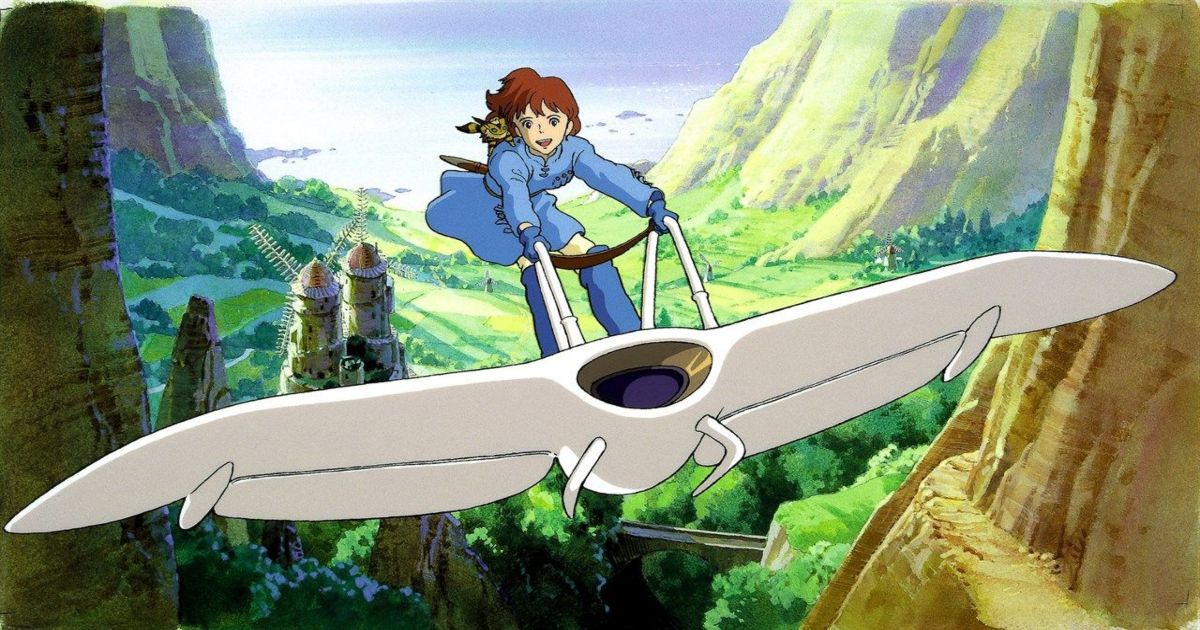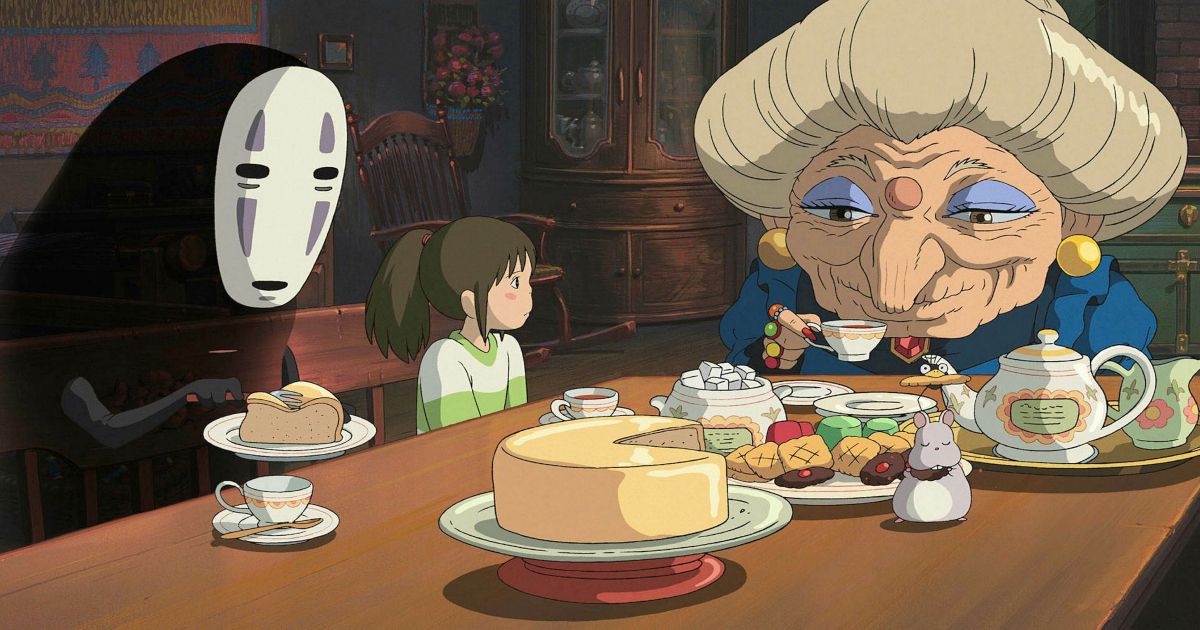It’s a strange thing to believe that live-action films and animated films are both considered the same medium. Of course, both have plenty in common, and most live-action films could somewhat easily be recreated as animated films. The opposite, however, is not true. One of the things that unites and separates these two kinds of movies is imagination. Because both are visual mediums, they require the imagination of creators to put something beautiful on screen. In the case of animation, animators are not bound by the limits of the real world when searching for something to portray.
Studio Ghibli is one of the few production studios that capitalizes on that essential quality of animation: an unbound imagination in every work that they produce, whether it’s from famed director Hayao Miyazaki or any other brilliant Ghibli mastermind. Many of these films have been painstakingly animated frame-by-frame by talented 2D artists, taking an exorbitant amount of time; it took three years to animate only 36 minutes of Miyazaki’s new movie, for instance.
Updated September 16, 2022: We know how cherished the films of Studio Ghibli are, so in an effort to represent the best of their movies, this article has been updated to keep it as comprehensive and fresh as possible.
As such, these great movies can impart an impossibly unique sense of wonder and joy about the world. Even the imaginative power of words can’t capture what makes these films so truly different; they beg to be seen and understood by people’s eyes and minds. Now that HBO Max has U.S. streaming rights to the entire Studio Ghibli catalog, there’s no excuse not to witness them in all their beauty. Here are the best Studio Ghibli movies, ranked.
13 The Secret World of Arrietty
Studio Ghibli remained a constant force in cinema at the dawn of a new decade in 2010, releasing the wondrous fantasy film The Secret World of Arrietty and once again capturing the hearts of audiences across the world. The animated picture marked the debut of director Hiromasa Yonebayashi and tells the magical tale of the titular tiny teenager, a Borrower girl and member of the four-inch-tall Clock family who suddenly finds their existance compromised when she is discovered by (and ultimately befriends) a human boy named Shō.
The whimsical Studio Ghibli flick was based on a series of children’s books by English author Mary Norton and went on to become a critical and commercial hit, winning the prestigious Animation of the Year award at the Japan Academy Prize. Both Hayao Miyazaki and Isao Takahata had previously been wanting to adapt Norton’s novel about little people living beneath the floorboards of a family for nearly 40 years, and the animation studio founders’ patience paid off splendidly; The Guardian called Arrietty “the soul food of the animation world.”
12 Only Yesterday
Despite becoming the highest-grossing film in Japan upon its release in 1991, Studio Ghibli’s Only Yesterday is often overlooked in the animated studio’s superb catalog but is nonetheless a visually stunning and emotionally enlightening masterpiece in its own right. The drama takes place in 1982 and centers on the unmarried, 27-year-old city-slicker Taeko Okajima, who decides to shake up her everyday routine by traveling to the rural countryside to visit family in hopes of escaping the chaos of Tokyo life. During her getaway, Taeko is faced with both her past and present feelings as she reminisces about her childhood and all the events that shaped who she is today, leading to the young woman reflecting on what she wants for her future.
Only Yesterday shies away from traditional animated themes and subjects, instead becoming a realistic and uplifting film marketed towards adult women. Based on the Hotaru Okamoto and Yuko Tone manga of the same name, the drama implements a more realistic style of animation and provides a poignant and honest look at the lives of women in Japanese society.
11 Pom Poko
This 1994 movie has been largely forgotten by many Studio Ghibli fans, which is a huge shame since it’s one of the most wild and bonkers films the animation studio has ever produced. Written and directed by the late great Isao Takahata, who always had a more serious and adult touch (as in Grave of the Fireflies and Only Yesterday), Pom Poko is Ghibli at its most radically environmentalist, taking the usual subtext of Ghibli cinema and plastering it across the screen as hypertext.
The film follows a group of Japanese raccoon dogs who realize that they’re land is being targeted for real estate development, and begin a series of revolutionary acts against the humans and corporations surrounding their home. It’s an extremely odd movie, with a silliness that can be childlike but some disturbing imagery, violence, sexual humor, and political content that is entirely adult. It’s impossible to define, but whatever it is, Pom Poko is incredible.
10 The Wind Rises
The 2013 film The Wind Rises was meant to be Hayao Miyazaki’s last film, but the 81-year-old director has been coming out of retirement with the anticipated release of 2023’s Studio Ghibli film, How Do You Live? As his supposed swan song, The Wind Rises was an extremely personal project for the great Ghibli director, and represented many of his conflictual feelings about Japan. The movie focuses on the engineer Jiro Horikoshi and his brilliant aircraft deigns, and if that sounds full, the film is anything but. The Wind Rises is a beautiful meditation of pacifism, creativity, and imagination that shows the director wasn’t slowing down whatsoever as a septuagenarian.
9 Kiki’s Delivery Service
Kiki’s Delivery Service follows Kiki, a 13-year-old witch who opens a delivery service using her flying broom to deliver items to people. Doubling as a coming-of-age romance, Kiki continuously crosses paths with Tombo, a wide-eyed young boy who admires her ability to fly. Each element of Ghibli’s impressive production talents is on display in this film, which offers a memorable score, excellent voice acting, and a captivating story.
The animators have a special eye for capturing little moments here, like that of Kiki sleeping in a train car with the light of the passing environment crossing in front of her face with the train’s movement. These moments are the reason that Studio Ghibli’s films are often called “humanist.” They give these characters and their internal lives a rich depth that is as compelling as it is beautifully animated.
8 Castle in the Sky
If the floating city Laputa looks derived from a steampunk adventure story, it’s because this film was likely one of the biggest sources of inspiration for the steampunk aesthetic. In Castle in the Sky, an airship is attacked by air pirates in search of a crystal pendant, a key to the fabled city of Laputa, which is rumored to be full of the riches of a lost civilization.
A princess, lost after the attack on the airship, has to ensure the safety of Laputa with the help of an orphaned boy named Pazu. One of the first films produced by Studio Ghibli, it was the first widely-seen success of the formula that would make Studio Ghibli renowned globally: well-realized fantasy aesthetics and idealistic youthful characters tasked with saving their communities.
7 My Neighbor Totoro
Not much actually happens in My Neighbor Totoro, and incredibly, it’s a movie that tugs hard at the heartstrings anyway. Two young girls move into a new home with their father and discover friendly spirits in the environment of their residence and its surrounding land. The plot follows their journey into being inducted into the vibrant world of spirits, none of which are particularly harmful.
The magic of My Neighbor Totoro is in the imagination of spirits and their design, which draws on Japanese mythology and other inspirations. Some of these creatures, like the catbus, have some of the most endearing animation designs ever drawn, and help contribute to this film being a perfect pick-me-up for any bad day.
6 Whisper of the Heart
When Ghibli movies don’t involve incredibly high stakes, they usually focus on a lower scale of storytelling, and Whisper of the Heart is a great example. It’s a simple love story told in an urban Japanese setting and one of the best depictions of high school life and being a teenager, following as it does two high-school age characters. The premise is elevated by the delicate, lively sensibility that the filmmakers take to portraying love in a youthful urban environment.
Each of the settings in the story come alive through those smaller moments showing characters interacting with their surroundings, lounging on chairs, making tea, etc. These moments of pause and meditation are what make this feel like a truly universal story that anyone who has ever loved will be able to relate to. Watch this film with an open heart and a cup of tea for the best, most peaceful viewing experience. A live-action sequel produced by Sony Entertainment was originally planned, but delayed due to the COVID-19 pandemic.
5 Grave of the Fireflies
Grave of the Fireflies was a major divergence from the majority of Studio Ghibli’s work, doing away with much of the romantic childhood themes that underlie most of their films. Instead, it’s a movie about World War II and all the suffering and trauma it entailed, focusing on two Japanese teenagers struggling to survive during the last days of the war, around the time of Japan’s surrender.
There’s a reason that audiences of the film relay a deep sorrow even when only remembering Grave of the Fireflies— it is undeniably heartbreaking. Every bit as humanistic as other Ghibli films, this one chooses to resurrect the deep, lingering scars of war trauma and its merciless effect on children. It’s best to be emotionally prepared when watching this one.
4 Howl’s Moving Castle
Loosely based on the 1986 novel of the same name, Howl’s Moving Castle is a story about a young girl, Sophie, cursed by a witch to appear as an old woman, who encounters a cynical and enigmatic wizard named Howl. Hayao Miyazaki, who directs most of Ghibli’s work, made the film in opposition to the U.S. invasion of Iraq in 2003. As such, it has strong anti-war themes expressed through Howl’s resistance to the advances of the king in this fictional land.
The aesthetic of the film is a unique blend of newer technology and medieval architecture that makes this fantasy world ever more vibrant. Sophie’s journey towards breaking the curse and subverting Howl’s cynicism creates a delightful narrative about the worth of living and the wisdom imparted by old age.
3 Princess Mononoke
Several Ghibli movies include heavy environmentalist themes, and Princess Mononoke is one of the films that celebrates and sanctifies the earth the most, perhaps only behind Pom Poko. In a world resembling feudal Japan, gods and demons that take the form of animals act as a deterrent to the incursion of humans on the natural world. Prince Ashitaka journeys across the land to locate the cure to a mysterious illness that spreads among animals and humans alike. He encounters Mononoke, a human princess in league with the wolf goddess, and together they must stop a faction of humanity bent on gaining control over the natural world.
There’s a strong subtext to this film about the place of humanity within the larger universe and the sanctity of plant and animal life that will resonate with climate-conscious audiences, and anyone who has ever understood the need to protect the planet’s biodiversity. The film was so popular outside Japan that it was even adapted for the stage, which was also well received.
2 Nausicaa of the Valley of the Wind
Set in a post-post-apocalyptic future (1000 years after an apocalyptic event), Nausicaa of the Valley of the Wind presents a vision of a world where giant mutated insects have evolved to protect the remaining plant life on earth. A girl with the ability to communicate with the insects has to ensure that a faction of humanity won’t reactivate a Giant Warrior, one of the robotic abominations responsible for the destruction of the earth.
Even as long as 40 years ago, the aesthetics presented by this movie are products of a large and vivid imagination. Small one-person planes, insect-inspired armor, giant beetles, and 20th century airships alongside rural villages make Nausicaa a visually unique experience. Delicate interpersonal moments interspersed with grand scenes of eye-catching action make this one of Studio Ghibli’s best titles.
1 Spirited Away
Studio Ghibli’s greatest creation is its most critically acclaimed one. Having been one of Japan’s highest grossing films for many years after its release, Spirited Away became a household name as far away as the United States. The coming-of-age movie tells the story of young Chihiro and her journey to leave the magical world she finds herself trapped in, resulting in a film which resonates with anyone who has ever felt left behind by the pace of the modern world. Every frame in Spirited Away is brimming with life, from the iconic moonlit bathhouse to the flooded, dream-like train tracks.
The film is an engrossing meditation on what it means to grow up and the importance of retaining a youthful spirit in spite of the greed and indulgences of contemporary society; as such, it’s surprisingly one of the best movies about capitalism. The filmmakers have packed as much magic into the runtime of Spirited Away as possible, without it ever feeling rushed. Joe Hisaishi’s score makes each scene feel much larger than life, and this element taken together with its visuals and themes creates a powerful argument to live a natural life at its fullest and to celebrate all moments spent in the company of loved ones.
